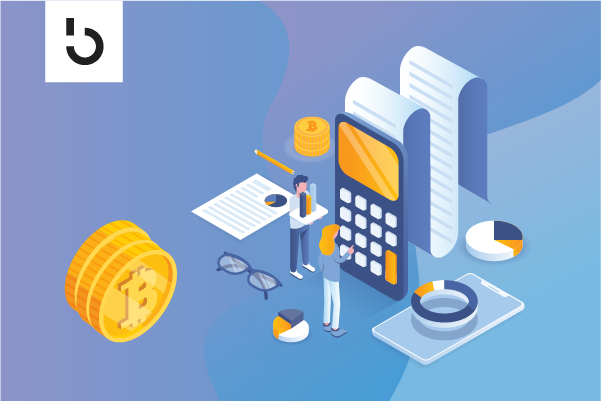
Margin trading has become increasingly popular among digital currency traders over the last few years. As a result, a number of leading exchanges have added bitcoin margin trading features to their platforms to meet the growing demand.
A bitcoin margin trading calculator enables traders to compute the funds needed in their account to open and hold a leveraged trading position. In this guide, we’ll cover the top bitcoin margin trading calculators to help you forecast potential profit.
What Is Margin Trading?
Margin trading refers to using borrowed funds to increase the size and, therefore, potential profit (or loss) of a trading position. Margin refers to the amount a trader needs to hold on his or her account to open and hold leveraged trading positions.
For example, you could buy a digital asset for $1,000 using $200 of your own funds and $800 borrowed from margin lenders on a margin trading platform. The net value of the position (asset price minus the amount borrowed) is $200. In this scenario, the trading platform may require you to hold $100 on your margin account for this position.
If the value of the asset drops from $1,000 to $850, you will need to top up your margin account by an additional margin of $50 to compensate for the drop in asset value and to ensure that your margin position remains open. If you do not respond to the margin call, the trade will be closed out automatically.
Experienced traders resort to margin trading in an attempt to amplify their trading profits. If the margin trade goes in the right direction and it closed out while in profit, the trading profit is multiplied by the leverage the trader has chosen (minus the margin borrowing fee and any other trading fees).
Top Bitcoin Margin Trading Calculators
Our editors have found the best bitcoin margin trading calculators that you can use for free. To rank the calculators, we have looked at criteria such as ease-of-use, popularity (measured by the number of backlinks), and the number of supported digital currencies and tokens.
Be mindful, however, that these are all margin calculators linked to trading platforms and, thus, use each platform’s margin requirements in their computations. Nonetheless, they provide excellent guidance on how much you can roughly expect to hold as margin when putting on leveraged trading positions.
 Coinexx Margin Calculator
Coinexx Margin Calculator
- Number of Supported Digital Assets: 5
- Ease of Use: 3.5
- Mobile Friendly: Yes
- Calculatable Leverage Available: Up to 1:500
Coinexx is a forex and digital currency trading platform that enables users to trade using the leverage of up to 500:1. It is one of the relatively newer additions to the online digital assets/forex brokerage services market.
The platform has a fairly straightforward margin calculator built into the website. It enables users to select instruments from various segments, including fiat currencies, commodities, indices, and crypto, with leverages up to 500:1 supported.
We have given it an overall score of 3.5 for its simplicity, ease of use, and accessibility on mobile platforms. The calculator loses points for supporting only 5 digital asset pairings. (BMJ Score: 3.5)
 CryptoGt
CryptoGt
- Number of Supported Digital Assets: 13
- Ease of Use: 3
- Mobile Friendly: Yes
- Calculatable Leverage Available: Up to 1:200
CryptoGT is a leveraged trading platform for digital assets. It has both real time and dynamic leverage margin calculators With its real-time margin calculator, users can calculate how much margin they will need to open and hold a position on CryptoGT.
The values are dependent on the amount and the leverage, which can be scaled only up to 200:1. On the plus side, you do get access to at least 13 different crypto asset pairings.
That lower leverage bandwidth is one of the main reasons why give the CryptoGT calculator an overall score of 3 out of 5. The tool does gain points for supporting more than a dozen different assets, as well as being relatively accessible and easy to use. (BMJ Score: 3.0)
 FXPro Margin Calculator
FXPro Margin Calculator
- Number of Supported Digital Assets: 1
- Ease of Use: 3
- Mobile Friendly: Yes
- Calculatable Leverage Available: Up to 1:500
FXPro is a leading forex online broker that also supports digital currency trading. On its cryptocurrencies platform, users can trade CFDs on all major digital assets pairs including BTC, ETH, LTC, and more.
The platform supports trades with leverage of up to 500:1. Users have access to many tools on the FXPro platform, including a feature-rich margin calculator for quick access to optimal margins for any leverage ratio.
Unfortunately, while the calculator supports a ton of fiat currency pairings, we could not find any options to calculate margins on any digital assets. This is the main reason why the FXPro calculator gets a rating of 1.5 on our review. (BMJ Score: 1.5)
 CashBack Forex Margin Calculator
CashBack Forex Margin Calculator
- Number of Supported Digital Assets: 34
- Ease of Use: 4
- Mobile Friendly: Yes
- Calculatable Leverage Available: Up to 1:600
CashbackForex has been an online forex rebate provider active since 2007. Along with fiat currencies, they also support digital asset pairings on their margin calculator tool. Traders can check out live price charts and historical charts on their preferred instruments.
The margin calculator page is one of the best we have reviewed, with a beginner-friendly interface, detailed FAQ section that covers all the basics, and access to many digital assets.
Due to the reasons listed above, we feel that an overall score of 4 out of 5 is appropriate for the Cashback Forex Margin Calculator. It ticks all the regarding what an online margin calculator for digital assets should be. (BMJ Score: 4.0)
 CryptoAltum Dynamic Leverage Margin Calculator
CryptoAltum Dynamic Leverage Margin Calculator
- Number of Supported Digital Assets: 10
- Ease of Use: 3.5
- Mobile Friendly: Yes
- Calculatable Leverage Available: Up to 1:500
CryptoAltum is a dedicated margin trading platform for digital assets. Users get access to over 60 different crypto/fiat currency pairs with low spreads, secure funding, and fast withdrawals.
The margin calculator available on the platform uses a dynamic leverage model, which adjusts overall account leverage depending on the exposure of user positions. We counted at least 48 different digital asset pairings, involving major cryptos like BTC, ETH, LTC, DASH, and XRP.
Apart from a simple and intuitive interface, the CryptoAltum calculator page also provides access to a handy beginner’s guide on the subject of calculating crypto margins and profits. As a result of these user-friendly features, we have rated this calculator 4 out of 5. (BMJ Score: 4.0)
Margin Trading Risks
Traders are attracted to margin trading because of the chance to increase their profit potential. If the value of your investment surges dramatically, the margin trader can enjoy heavy profits. Naturally, due to the frequent aggressive bull runs in the digital assets market, traders tend to be quite keen on crypto margin trading.
On the flip side, you have to factor in the extreme volatility of digital assets. This makes margin trading on bitcoin and other cryptos far riskier than traditional investments and forex. Compared to the latter, the risk in crypto margin trading can come in several different flavors:
Leverage Risks
This is the basic risk involved in margin trading. The higher your leverage ratio, the risk of potential losses also increases accordingly. Many trading platforms support ratios as high as 1:600: at those levels, your potential losses can exceed the initial investments by several magnitudes.
Volatility Risk
This kind of risk emanates from the nature of the instrument used for trading. The quantum of risk in cryptos is much higher than what is generally seen in traditional assets, stocks, and commodities. Hence, margin traders focusing on digital assets must be mindful of this increased risk exposure.
Liquidity Risk
Assets with high levels of liquidity pose a lower risk potential in margin trading, as the trader can quickly buy or sell the asset depending on the situation. This comes at a cost of lower premiums/discounts. But the benefits far outweigh these deficiencies.
Digital assets often have low liquidity in comparison to other assets. With higher liquidity risk, traders may have to deal with higher spreads or even zero transactions. This can hurt profits in the best of times, and leave losses greater than the investments in the worst-case scenario.
Digital System Risks
Instability in internet connections, errors or bugs in operating systems of trading platforms, and other computer malfunctions also pose a risk to margin trading in cryptos. All these have the potential to leave traders stranded at critical junctures, unable to effect a trade.
Conclusion
At Bitcoin Market Journal, we have a simple investment philosophy: Buy and hold bitcoin, plus a small number of high-quality digital assets, for the long term (5+ years). This approach has outperformed the traditional stock market, as well as most trading strategies.
Margin trading is not for the faint-hearted or the conservative digital asset investor. Only investors with a heightened stomach for risk may consider this route. But it’s not surprising: as long as bitcoin and other altcoins continue their journeys “to the moon,” the interest in bitcoin margin trading will persist.
Related Articles:
Subscribe to the Bitcoin Market Journal newsletter to learn more about investing in bitcoin, altcoins, security tokens, and blockchain technology.



 Coinexx Margin Calculator
Coinexx Margin Calculator CryptoGt
CryptoGt FXPro Margin Calculator
FXPro Margin Calculator CashBack Forex Margin Calculator
CashBack Forex Margin Calculator CryptoAltum Dynamic Leverage Margin Calculator
CryptoAltum Dynamic Leverage Margin Calculator



